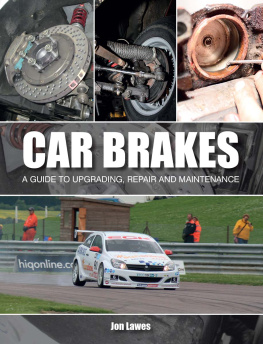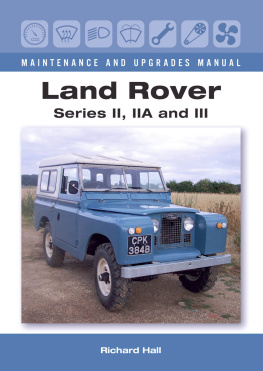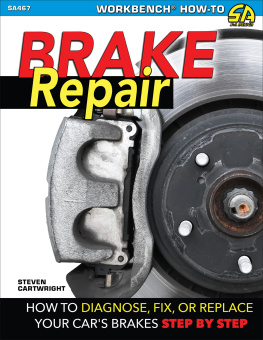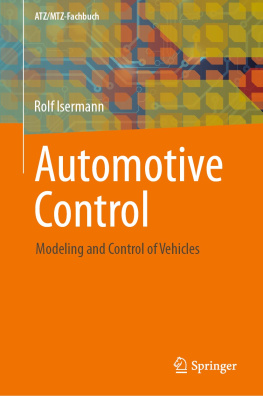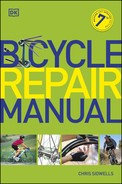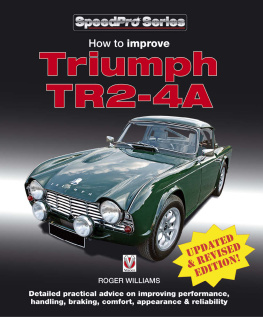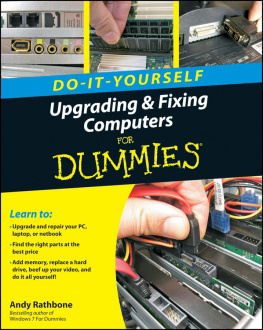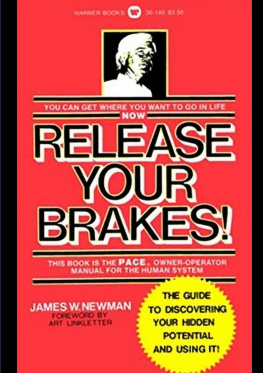First published in 2014 by
The Crowood Press Ltd
Ramsbury, Marlborough
Wiltshire SN8 2HR
www.crowood.com
This e-book first published in 2014
Jon Lawes 2014
All rights reserved. No part of this publication may be reproduced or transmitted in any form or by any means, electronic or mechanical, including photocopy, recording, or any information storage and retrieval system, without permission in writing from the publishers.
British Library Cataloguing-in-Publication Data
A catalogue record for this book is available from the British Library.
ISBN 978 1 84797 675 8
Disclaimer
Safety is of the utmost importance in every aspect of an automotive workshop. The practical procedures and the tools and equipment used in automotive workshops are potentially dangerous. Tools should be used in strict accordance with the manufacturers recommended procedures and current health and safety regulations. The author and publisher cannot accept responsibility for any accident or injury caused by following the advice given in this book.
CONTENTS
ACKNOWLEDGEMENTS
The following, arranged in alphabetical order, have been instrumental in the production of this book:
Ben Short of BS Motorsport for his advice and guidance, specifically with regards to driver training and vehicle dynamics
Continental/ATE for their advice and images
EBC Brakes for their assistance with advice and photographs
Eric Jacobsen for his help, photos and advice
Justin Westley for his help and good humour
John Goldsmith of Goldsmith and Young Ltd for his support and loan of facilities
Mark Richardson for his assistance with photos, friendship and support
Mike Simpson for his friendship and photographic assistance
Simon Crosse for his photographic input
Simon Sexton and Adam Gallaway for their hand-skills and experience in producing the technical sections
And of course my family for their tolerance.
INTRODUCTION
Modern domestic braking systems are designed to a very high standard, from those fitted to the most basic shopping hatchback to super-cars costing more than the average home. Due to the demands of the German Autobahn, even the most humble vehicle is capable of being brought from top speed to stationary in a respectable time and distance. Most modern cars, however, will object to doing this on a regular basis, which means that certain upgrades or modifications will need to be carried out for fast road, track or competition use. In this book I will guide you through some of the key operating principles of braking systems, the potential for upgrades, and choosing which will be most suited to your application.
SAFETY
Before starting any task, from a visual inspection right through to a complete strip and rebuild of the brakes, you must take stock of some important safety points.
THE CRITICAL NATURE OF BRAKING SYSTEMS
If you make a mistake during the install of something simple like a car stereo you may find it doesnt work, or not in the way you expect. Possibly the worst case scenario could be a fire. The best thing to do if you dont know what you are doing is to get in an expert, but you can mitigate most risks by simply preparing and doing research before you start.
If you make a mistake during the installation of braking components the consequences are suddenly much more severe. Although braking systems are on the whole quite simple, there are many tiny errors that could result in catastrophic failure. If you are not confident that you can carry out any of the tasks detailed in this book, then obtain competent assistance. There is no shame in asking for a fresh set of eyes to look over critical tasks, and in many industries, such as aviation, critical systems such as brakes usually require an independent check prior to being released to service after maintenance, just to ensure no mistakes have been made; after all, we are all human. If a seal is incorrectly installed on a brake caliper or master cylinder you could lose all pressure from the system, and on older single line set-ups this could mean a total loss of brakes. Dont be afraid to check your work.
TIDINESS IN THE WORK AREA
Although it sounds obvious, it is startling just how many otherwise very professional workshops are actually quite cluttered and untidy. This increases the risk of losing components, trip hazards and, of course, the ingress of dirt and grime into systems that should be kept clean. Keep a clean work area, especially when dealing with braking components. There should be two distinct phases to stripping components: dirty and clean. The dirty phase is when all the grime from the road is removed, old seals disposed of and contaminated fluid drained. Only when the component has been fully stripped and all contaminants removed can the clean phase start.
CHEMICALS AND BRAKE FLUIDS
In UK industry COSHH regulations (Control of Substances Hazardous to Health) have been in place for many years, controlling the use of various chemicals in the workplace. Most usefully for the home engineer, this has meant that comprehensive data sheets are available for the various fluids and chemicals that we use regularly, either online or directly from the product manufacturers. These allow the home user to check exactly what sensible precautions should be carried out when using harmful agents, and also give the best advice on what to do if an accident takes place. These data sheets, known as COSHH Assessments, detail the correct fire-fighting techniques, action to be taken if swallowed or the material touches bare skin, and other vital information. It is indeed very sensible to make sure you are fully informed about any substance you may be using, especially when it may be that you require some specific form of personal protective equipment (PPE) that might not be immediately obvious. Today it is very easy to protect yourself from harm with the amount of information available, and sensibly priced PPE is easily obtainable online. It is easy to minimize the risk to yourself: why risk harming yourself?
JACKING
Naturally, to reach the brakes of a vehicle, in most cases you will need to jack the vehicle up. The safest way of doing this is on a four post lift, but as that is beyond the means of most people we need to look at sensible alternatives. As we are working on the brakes it makes sense that either a single corner or an axle-set (i.e. both front or both rear wheels) will need to be elevated. First ensure you choose a safe area to do this: firm, level ground where there is no risk of the stand or jacks sinking or becoming unstable. Use high quality jacks and stands, and inspect them before use. Most items sold in Europe now come with a TV marking, a statement that the design of the component you are using has been assessed by the Technischer berwachungs-Verein (Technical Inspection Association). This is an independent group of organisations who assess equipment and processes to verify that they have been designed in a safety-conscious manner. If the jack or stand you have purchased has TV accreditation then it has been assessed as suitable for its intended purpose

